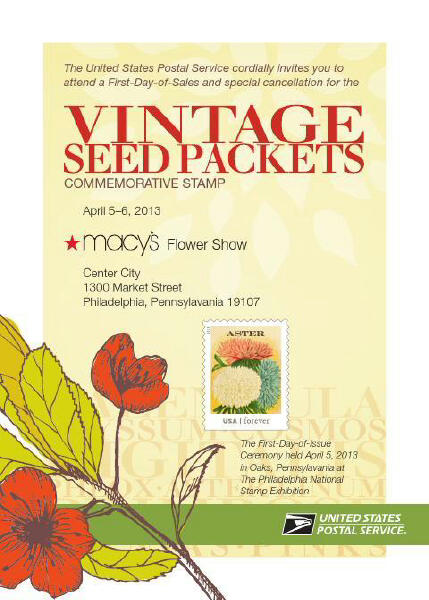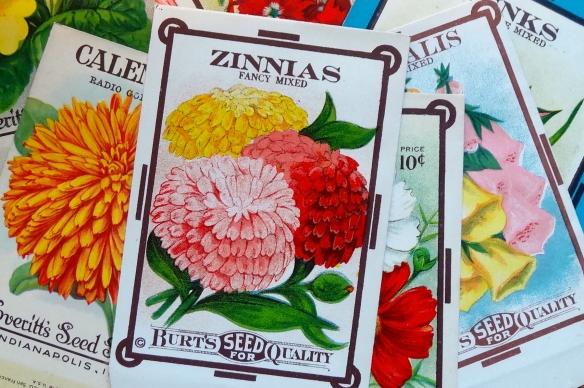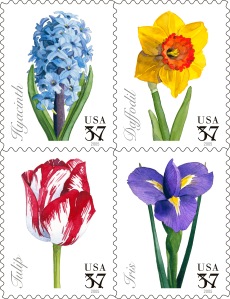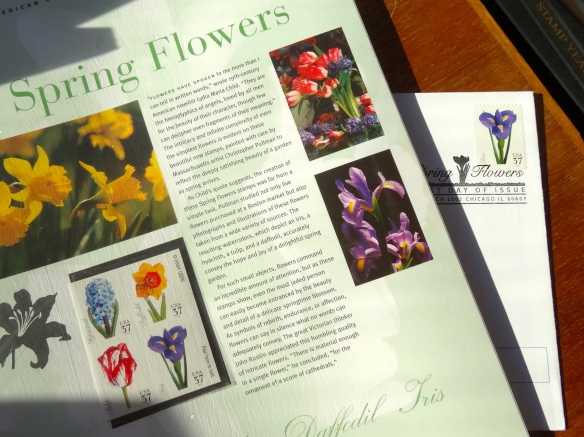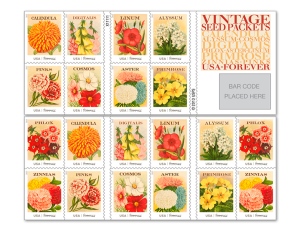 The will be issued in just a week. Each of the ten stamps features a rich and detailed illustration from an antique seed packet. Aren’t they just incredible?! In fact, we are so taken with these beautiful images that we had to learn more about them. Here’s what we found out.
The will be issued in just a week. Each of the ten stamps features a rich and detailed illustration from an antique seed packet. Aren’t they just incredible?! In fact, we are so taken with these beautiful images that we had to learn more about them. Here’s what we found out.
Seed packets were a Shaker innovation. In the early 1800s, Shakers began growing and selling garden seeds, distributing their wares in many states, and they used small packets for marketing and shipping their product. Undecorated, these packets contained only handwritten identification of the contents on the outside.
As seed companies grew larger and more widespread in the late 19th century, colorful catalogs made an appearance, enticing gardeners with beautiful—almost fairy tale—illustrations of plants covered with perfect blooms and bountiful vegetables. The seed packaging, however, remained utilitarian until a revolution in on-site retail.
A new era began in 1879, when F. W. Woolworth opened stores that featured self-service counters, allowing customers direct access to merchandise that had previously been accessible only with the help of a salesman. Up to this time, seed vendors did business extensively through mail order, which could take several weeks, or at stores where customers had to ask for seeds from behind a counter, making seed buying deliberate and not subject to whim.
D. M. Ferry and Company was one of the first seed companies to take advantage of the new way of selling. It not only began using bright, colorful packaging, but it also pioneered the use of a rack called a “commission box” that exhibited the packets to best advantage and inspired impulse purchases. These eye-catching displays were also widely distributed in grocery, hardware, and general stores, and later even in gas stations.
Hand-tinted prints first decorated seed packets in the late 19th century. By the early 1900s, chromolithography, a printing process that allowed the production of inexpensive, multicolor prints, had almost entirely replaced hand tinting on seed envelopes. Each packet illustration presented an ideal, beautifully rendered flower or vegetable plant at the peak of perfection.

The illustrations featured on the Vintage Seed Packets stamps originally graced the fronts of flower seed packets printed between 1910 and 1920.
By World War II, photographic images had become the norm on seed packets. Though some companies have returned to packaging with a vintage look, fanciful yet apparently realistic photographs now adorn most seed packets, still luring gardeners to dream—and to buy.
The will be issued next Friday, April 5, at the Philadelphia National Stamp Exhibition in Oaks, Pennsylvania. The ceremony, which begins at 11 a.m., is free and open to the public. We will also be selling the stamps at the Macy’s Flower Show in the Grand Court (13th & Market St.) in Philadelphia on April 5-6. We hope to see you there!

